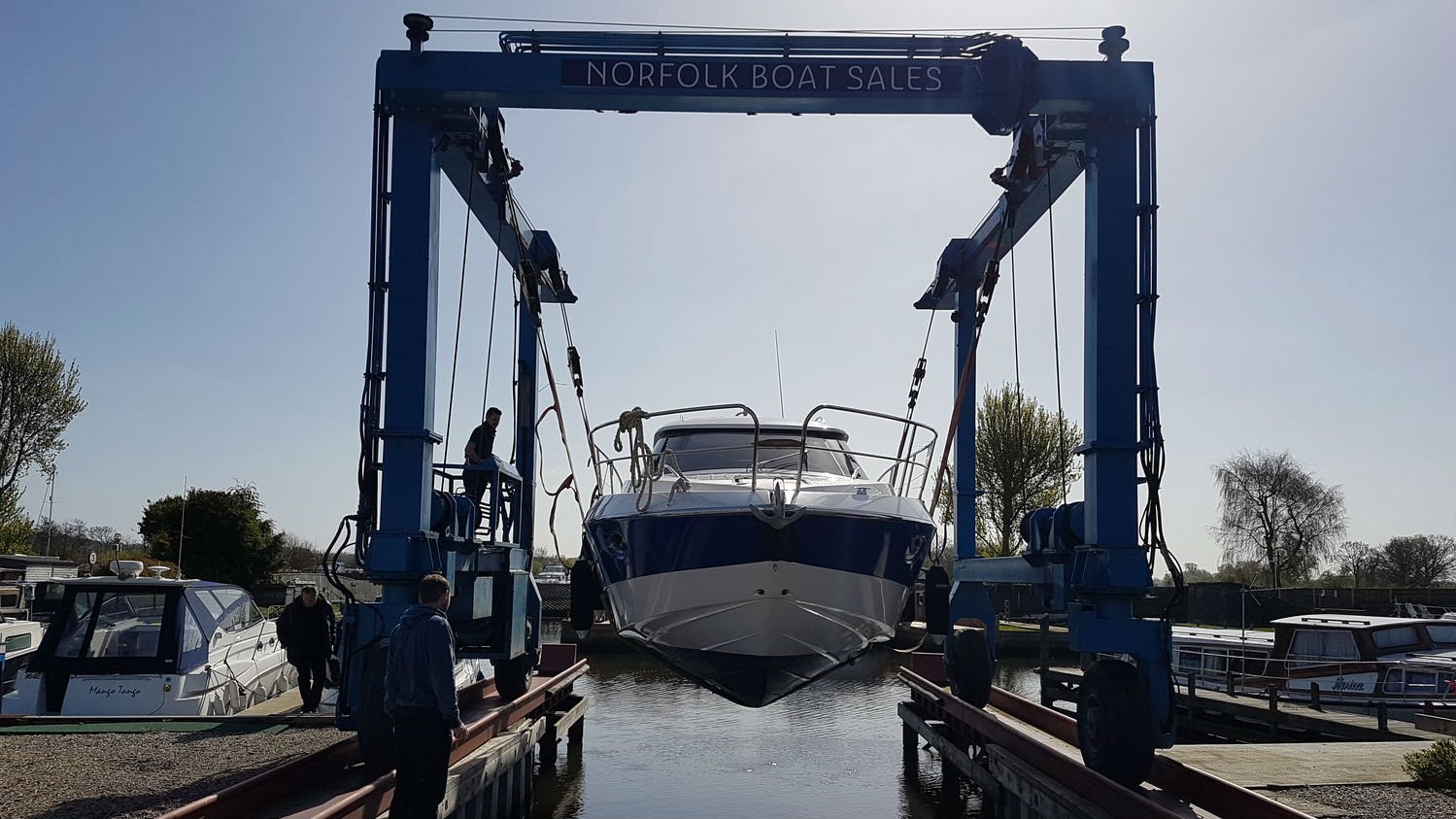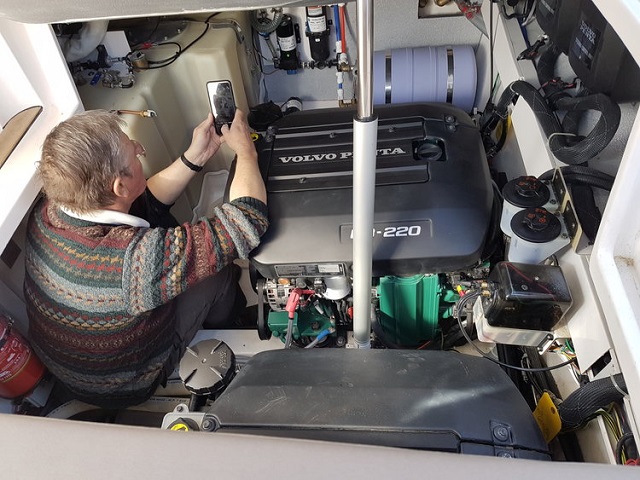The Two Happiest Days in a Man's Life
Yacht Buyer's Guide or: "The two happiest days in a man's life are when he buys his yacht and when he sells his yacht."

Buying a yacht can be a big deal. For most people, such a vessel is a significant investment. The upfront cost, the berth fees and the maintenance all add up. Unless they are intentionally buying a "fixer-upper," most buyers cannot afford to fix issues with the yacht after purchase. The yacht has to be the right price, and it has to be in good condition, not requiring any repairs which could further eat into the buyer's funds.
Even though the yacht market is down right now, yachting remains an expensive past time. A small, ordinary yacht can be four figures, but we are all familiar with the megayachts bought by people like Paul Allen, co-founder of Microsoft. There are price points everywhere in between. But few buyers will be spending more than $250,000 on a yacht, and at that price point, one is certainly among rarefied company.
Because it's such a commitment, buyers should make sure all the t's are crossed and the i's are dotted. They should seek to be legally safe and to verify that the yacht has no mechanical deficiencies. The former can be dealt with by a lawyer, but the latter has to be dealt with by a surveyor who is as familiar with the mechanical aspects of the yacht as your lawyer is with the legal aspects of the purchase and sale agreement.
A non-exhaustive list of issues to look for would, in our opinion, always include:
• that the ownership papers are in good order, so that the buyer can acquire clean title without encumbrances or debts once the price for the yacht has been paid; and
• that the certifications, blueprints and other documents relating need to be in proper order so that the yacht can be verified as being what the seller says it is, given the unfortunate frequency nowadays of encountering fraudulent (i.e. fake) certificates designed to mislead buyers; and
• that the seller's corporate information, e.g. his tax ID number, his registration with the Commercial Register or, as it may be, Companies House, is in good order, and that the seller is adequately solvent and is not subject to any creditor liens; and
• that the seller, inasmuch as he is being represented, is being properly represented under a validly issued power of agency and/or attorney and can sign for the yacht, which is to say, that he is legally allowed to sell the yacht to the buyer.
Although yacht brokers will typically have their own contracts, these are favorable to the seller and/or to the broker and should be substantially negotiated or swapped out entirely by a savvy buyer. The unfortunate truth is, though, that most buyers are not savvy because they have bought only, at most, a few yachts in their lifetime. But most yacht brokers are quite savvy because selling yachts is their day-to-day business.
The effort that goes into the contract for the yacht should be proportionate to the yacht's cost, and a good rule of thumb is 1-2 percent of the price. For a $200,000 yacht, this means it isn't unreasonable to spend up to $4,000 on legal and survey fees. But obviously, if the yacht only costs $4,000, it would be overkill to spend $4,000 on legal and survey fees. If you find yourself spending a silly amount of money in the lead up to the purchase or during the negotiation phase, though, it's possible that the yacht or seller are more problematic than the yacht's value warrants. Maybe it would be better to look around.
In general, it's the case that buyer and seller want to come together and to make the deal happen. It makes sense. One has a yacht, the other wants a yacht, so it's a good match. Deals can get done quickly and efficiently and with a bit of legal and technical due diligence, the buyer is afforded a sense of well-being, security and confidence. This is as it should be; after all, the seller is parting with his hard-earned money. Who wants to buy a lemon?
We recently accompanied a yacht sale in Norwich and used a BIMCO SALEFORM 2012. While the seller was a little surprised to see a commercial ship sale contract, we felt the comprehensive nature of the BIMCO SALEFORM was the way to go given the differing nationalities of the parties, the six-figure price of the vessel and the particular structure of the payment plan as an item for European Union export.
Remember: just because it's a leisure craft doesn't mean it can't develop all the problems of a larger vessel. And as the saying goes, “opportunity makes the thief,” so it's good for two strangers to write down what they want. Taking a moment to go through the clauses of the BIMCO SALEFORM 2012 also provides both seller and buyer an opportunity to consider all facets of the transaction and ask for changes to suit their needs.
It is advisable to do a dry inspection of the hull, which requires a basic standard of equipment. This can be done on a slipway, or as in the case here, by using a hoist system.
.jpeg) It is entirely standard for the seller to pay for any costs involved in preparing the dry inspection, except for the surveyor, as the information is useful to him even if the buyer "jumps ship" and the seller needs to look to sell the yacht to someone else. If the seller is unwilling to or is unable to offer a dry inspection, he may be trying to conceal defects.
It is entirely standard for the seller to pay for any costs involved in preparing the dry inspection, except for the surveyor, as the information is useful to him even if the buyer "jumps ship" and the seller needs to look to sell the yacht to someone else. If the seller is unwilling to or is unable to offer a dry inspection, he may be trying to conceal defects.
.jpeg) Here, the yacht is being released from the hoist and is now positioned in the water so that it can move on its own power. It should be possible for the yacht to immediately fire up and engage in a sea and/or river trial after being inspected. If not, it could be that the engine has a problem and requires a mechanic's attention before it can be driven.
Here, the yacht is being released from the hoist and is now positioned in the water so that it can move on its own power. It should be possible for the yacht to immediately fire up and engage in a sea and/or river trial after being inspected. If not, it could be that the engine has a problem and requires a mechanic's attention before it can be driven.
 Here is our surveyor diligently examining the yacht's "engine room" and bilge.
Here is our surveyor diligently examining the yacht's "engine room" and bilge.
It is smart and fair to go through the vessel completely, which is to say, to open up all compartments and every latch and ensure that even the parts of the vessel which are not directly visible are examined thoroughly. If the seller is rushing, it may be difficult to ask for this, but it's important then to politely and confidently assert one's interests.
.jpeg) It goes without saying that the interior should be as described. In this case: spotless and flawless, since the yacht was essentially brand new, right out of the yard.
It goes without saying that the interior should be as described. In this case: spotless and flawless, since the yacht was essentially brand new, right out of the yard.
.jpeg) In the BIMCO SALEFORM 2012, we had written “sea trials,” but it soon became apparent that we would not be able to take the yacht far enough out to get to the sea. We revised this language to read “river trial.” Luckily, in spite of this, we found a satisfactory solution.
In the BIMCO SALEFORM 2012, we had written “sea trials,” but it soon became apparent that we would not be able to take the yacht far enough out to get to the sea. We revised this language to read “river trial.” Luckily, in spite of this, we found a satisfactory solution.
 To properly test the engine, we found a good, speedy stretch and let the yacht stretch her legs. We hit roughly 31 knots. After a few turns, it appeared that the engine was in good working order. Pressure and temperature checked out. The next item of business was to let the buyer take a turn at the wheel. This is essential, because it is the buyer who needs to ensure that the feel or the yacht is exactly what he is looking for before he commits.
To properly test the engine, we found a good, speedy stretch and let the yacht stretch her legs. We hit roughly 31 knots. After a few turns, it appeared that the engine was in good working order. Pressure and temperature checked out. The next item of business was to let the buyer take a turn at the wheel. This is essential, because it is the buyer who needs to ensure that the feel or the yacht is exactly what he is looking for before he commits.
.jpeg) On the way back to the berth, the surveyor looked like he was having the most fun.
On the way back to the berth, the surveyor looked like he was having the most fun.
.jpeg) Even though the subsequent negotiations were tense, we got the contract signed and everybody went home happy. The details of the transport of the yacht are being handled from the buyer's side, and we were able to recommend one of our local partners in Cuxhaven, Germany, to handle the yacht transport back to the seller's home country.
Even though the subsequent negotiations were tense, we got the contract signed and everybody went home happy. The details of the transport of the yacht are being handled from the buyer's side, and we were able to recommend one of our local partners in Cuxhaven, Germany, to handle the yacht transport back to the seller's home country.
All in all, we had great fun facilitating the sale and we hope the buyer gets years of enjoyment out of his yacht. Hopefully, the quote in the title will not apply to him. But if he is ever ready to sell, we'll gladly be there to ensure that the sale also ends up being a happy day!
The opinions expressed herein are the author's and not necessarily those of The Maritime Executive.
